How to clean mushrooms, step by step
2 years ago · Updated 6 months ago
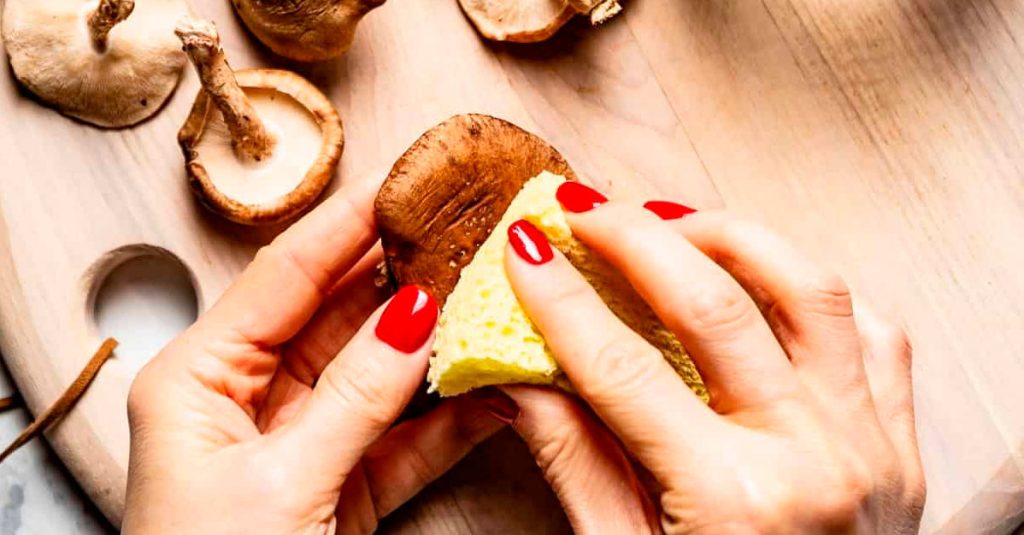
No matter how careful we are when harvesting mushrooms in the forest, and how much we use a knife and brush to remove the remnants of dirt from the mushrooms, there will always be leftovers on the stem or between the lamellae of the mushroom.
Back home after a hard day in the forest, the tough task of cleaning our harvested mushrooms arrives, but...
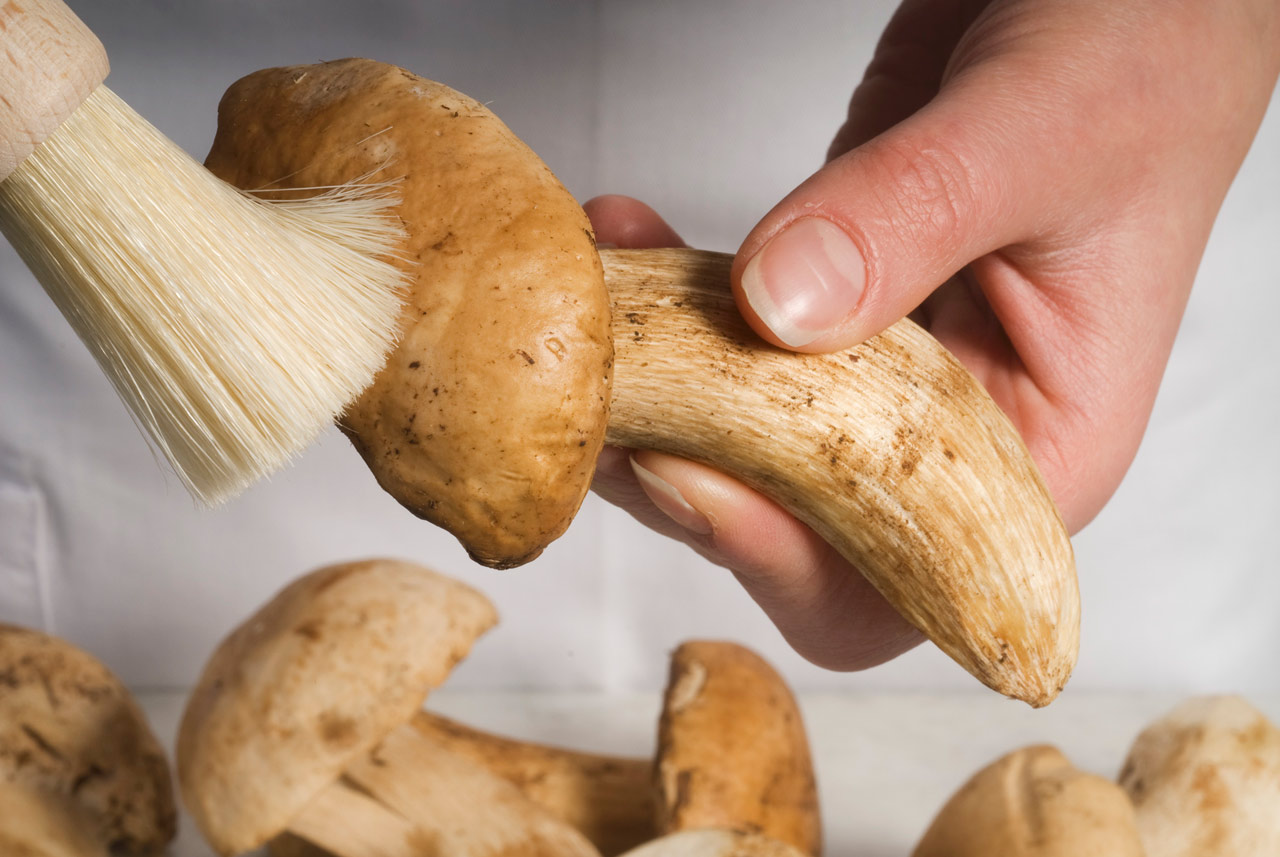
How do you clean mushrooms? What's the best way?
If we're talking about how to clean mushrooms, then the final decision will always fall to the cook-gatherer. The best option is, undoubtedly, to apply common sense.
We'll need to observe the mushroom specimens we've harvested, analyzing whether it's necessary to put them under the tap or in a bowl with water.
Some very sandy soils make it almost essential to use this method to clean mushrooms, as they fill up with sand.
If the dirt isn't very attached to the mushroom cap or stem, we can use a knife or special brush to clean mushrooms. This way, we'll get rid of those plant remains, leaves, soil,. . . that may have stuck.
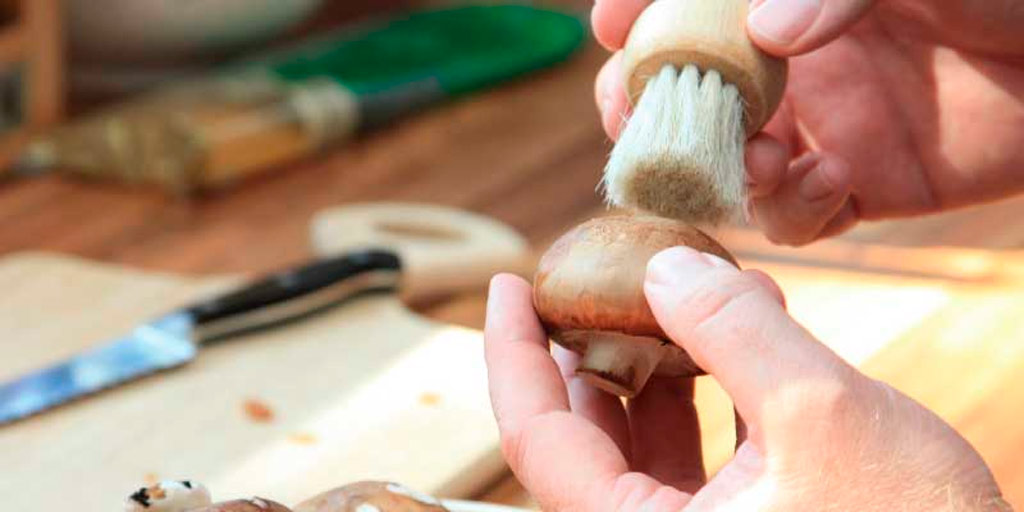
Recommendations on how to clean mushrooms
There are some consumers who recommend always washing mushrooms, as being out in the open they may have come into contact with animals, livestock, insects that may have sniffed them, licked them... . Here, our experience in mushroom picking will also help us to know where the mushrooms were picked and whether this contact was possible.
To clean most species, it will suffice to use a damp cloth which we'll rub gently to remove any dirt that hasn't come off using the mushroom cleaning brush.
If there's an area of the mushroom that's not in good condition, for having been in contact with another mushroom or with some object, we'll use a knife to sanitize the area.
If, after using the scraping knife, brush and damp cloth, the dirt persists, then we can only put it under the tap to perform a more thorough cleaning.
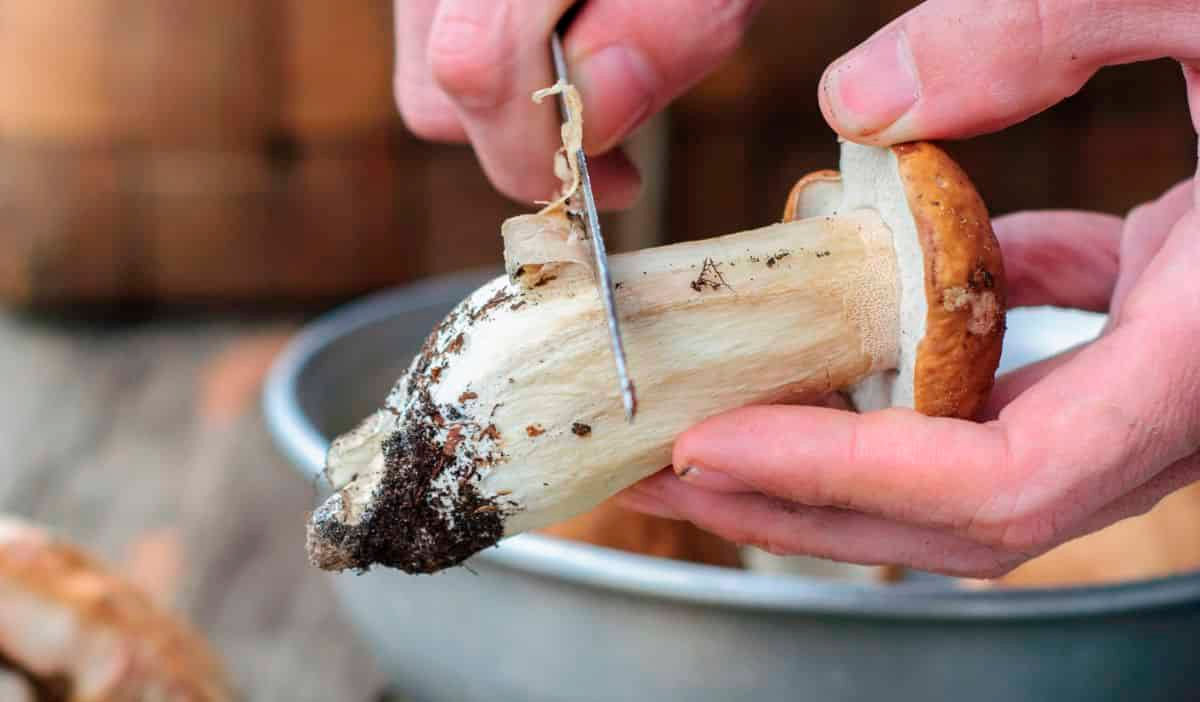
Does water affect the taste of mushrooms when they are cleaned?
Mushrooms and fungi are great water managers. In this way, they optimize all the water available to them. So when we moisten a mushroom, and to a greater extent when we soak it, it tends to swell.
This is why, if you're wondering how to clean mushrooms, you need to act in the same way as with fish: rinse them quickly under water, but never leave them to soak. As with all things, there are always exceptions (dehydrated mushrooms, excess sand, etc. ).
We mustn't forget that the culinary process will be altered after absorbing water. If we're using mushrooms in a recipe with mushrooms, we'll need to take into account that the mushrooms and ceps will bring in extra water. In this case, we'll need to add less of the remaining amount of water, stock or other liquids we'll be using in the recipe.
A good tip is to use over-washed mushrooms in a recipe where washing the mushrooms is not important.
If we have delicious robellones that we've washed a lot, the most appropriate would be to use these robellones in a sauce, letting the water mix with it. On the other hand, if we try to cook excessively washed mushrooms a la plancha, we'll find that they splatter a lot and release a lot of water. What's more, their cooking time will be longer and they'll take longer to brown.
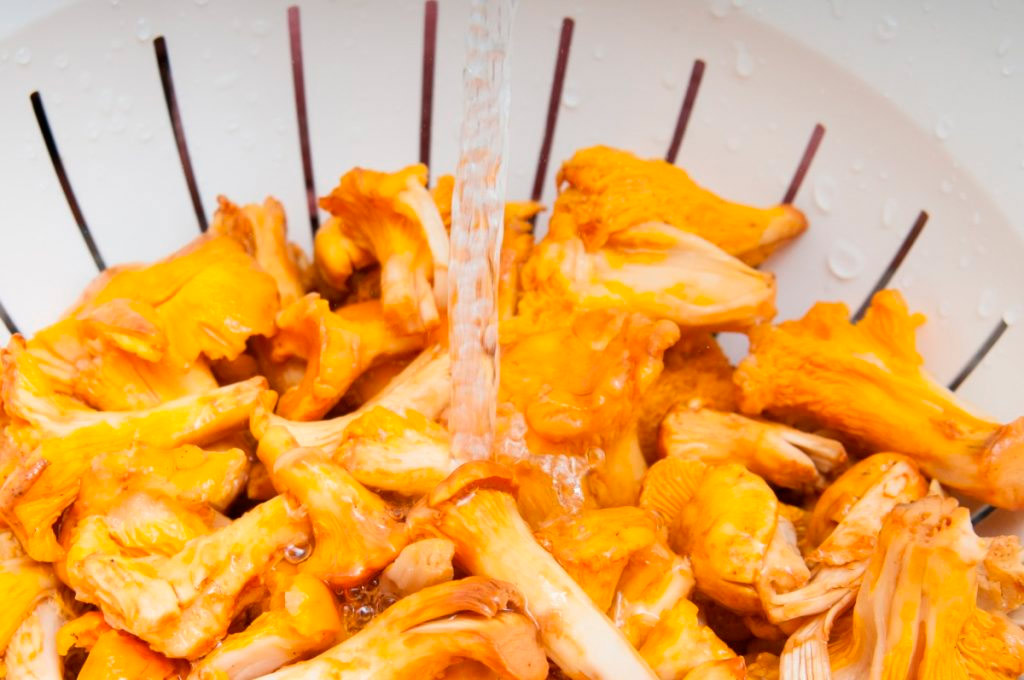
How to clean mushrooms step by step
Mushrooms are a delicious ingredient that can add a special touch to your dishes, whether in a gourmet recipe or a homemade meal. However, before cooking them, it's essential to know how to clean them properly.
Cleaning mushrooms not only ensures their flavor and texture, but also ensures that they are free from dirt and any impurities. Below, we present a detailed guide on how to effectively clean mushrooms.
Step 1: Gather the ingredients
To clean mushrooms, you'll need the following items:
- Fresh mushrooms
- A knife
- A soft brush
- A damp cloth
- A container of water
- A colander
Step 2: Preparation
Before you start, make sure you have a clean, uncluttered workspace. Wash your hands and gather all the necessary ingredients and utensils.
Step 3: Inspect the mushrooms
Before cleaning the mushrooms, examine them carefully. Remove any mushrooms that show signs of deterioration, such as dark spots, mold or a bad odor.
Step 4: Remove surface dirt
Use a soft brush to gently wipe away any fungus. Brush carefully to remove any soil or residue that may be on the surface. Do this with gentle, circular movements.
Step 5: Cleaning with a damp cloth
If the mushrooms are very dirty or you can't remove all the dirt with the brush, you can use a damp cloth to wipe them down. Make sure the cloth is clean and damp, but not soggy.
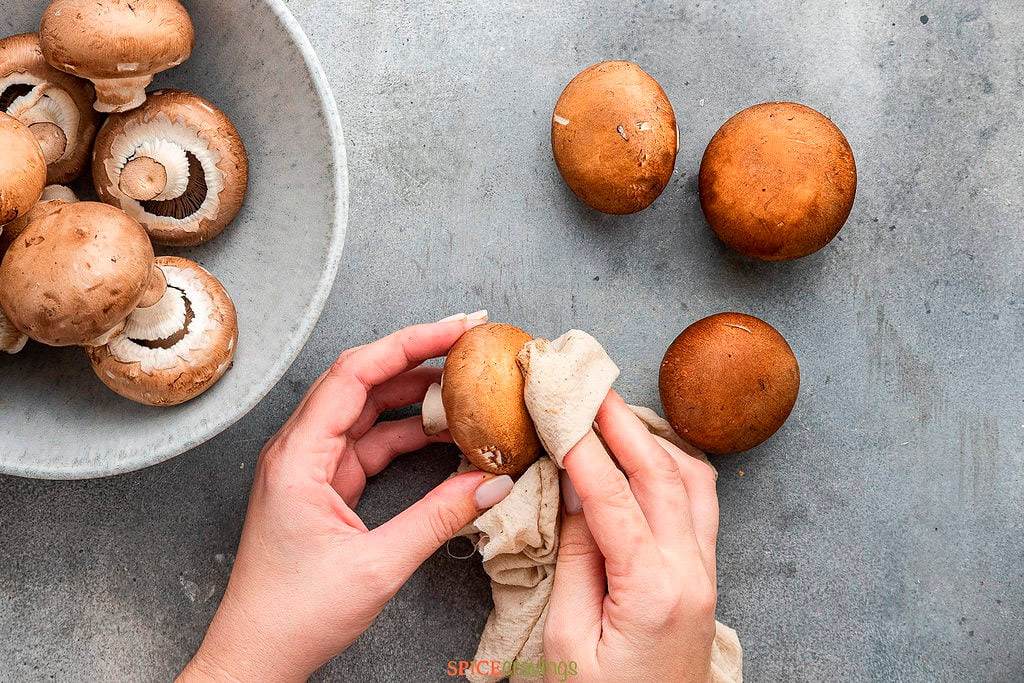
Step 6: Avoid immersing in water
Mushrooms are like sponges and easily absorb water. Therefore, it's essential to avoid immersing them in water for too long, as they could become soft and lose their flavor. If necessary, you can rinse them quickly under the tap, but don't leave them to soak.
Step 7: Drying
After cleaning the mushrooms, place them in a colander to drain off excess water. Then dry them gently with a clean cloth or kitchen paper.
Step 8: Storage
Once the mushrooms are clean and dry, you can store them in a paper bag in the fridge. Don't store them in plastic bags, as they can accumulate moisture.
With these simple steps, you'll be able to clean mushrooms effectively and be ready to prepare delicious recipes with this tasty ingredient. Enjoy your dishes with fresh, clean mushrooms!
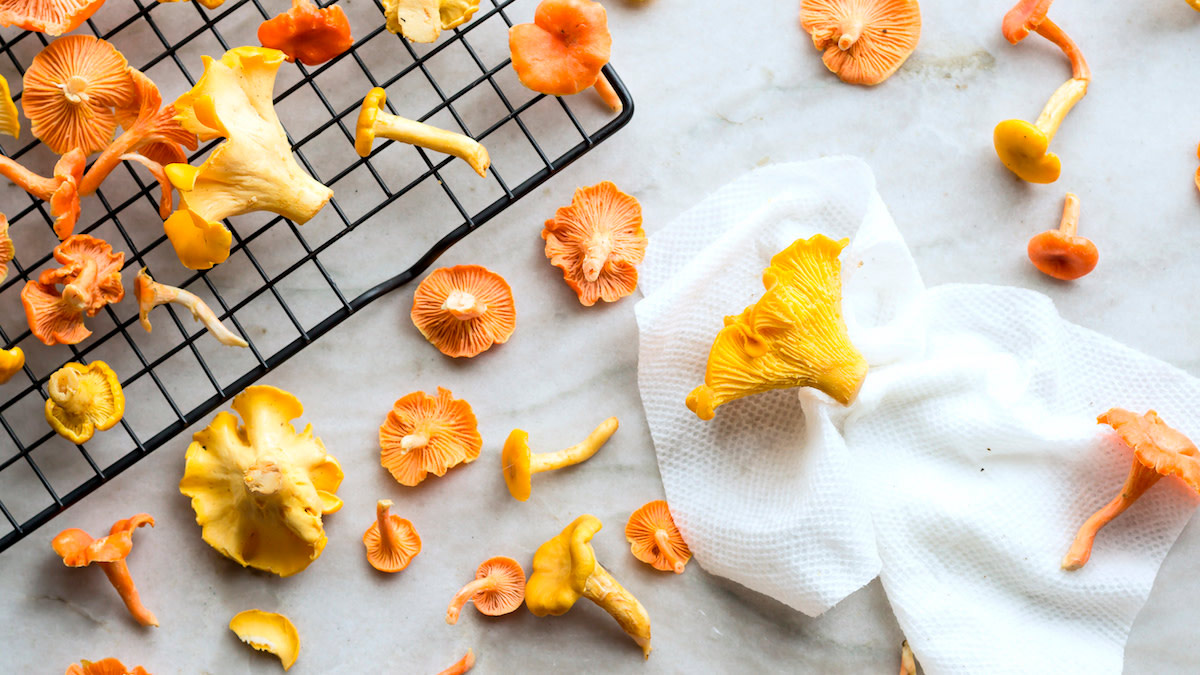
Take note of these tips for the upcoming mushroom season and share them with your friends. See you in the woods!

Te pueden interesar